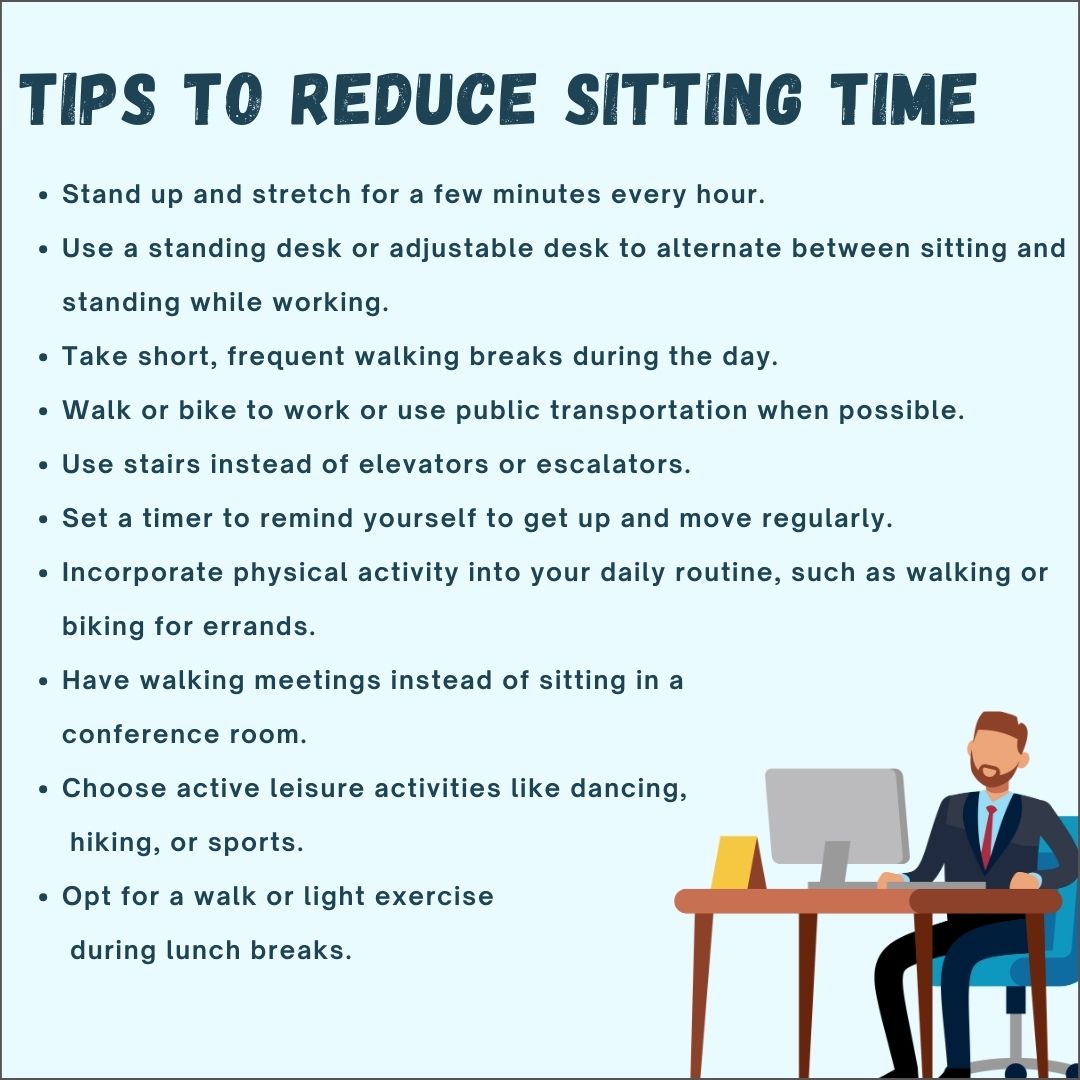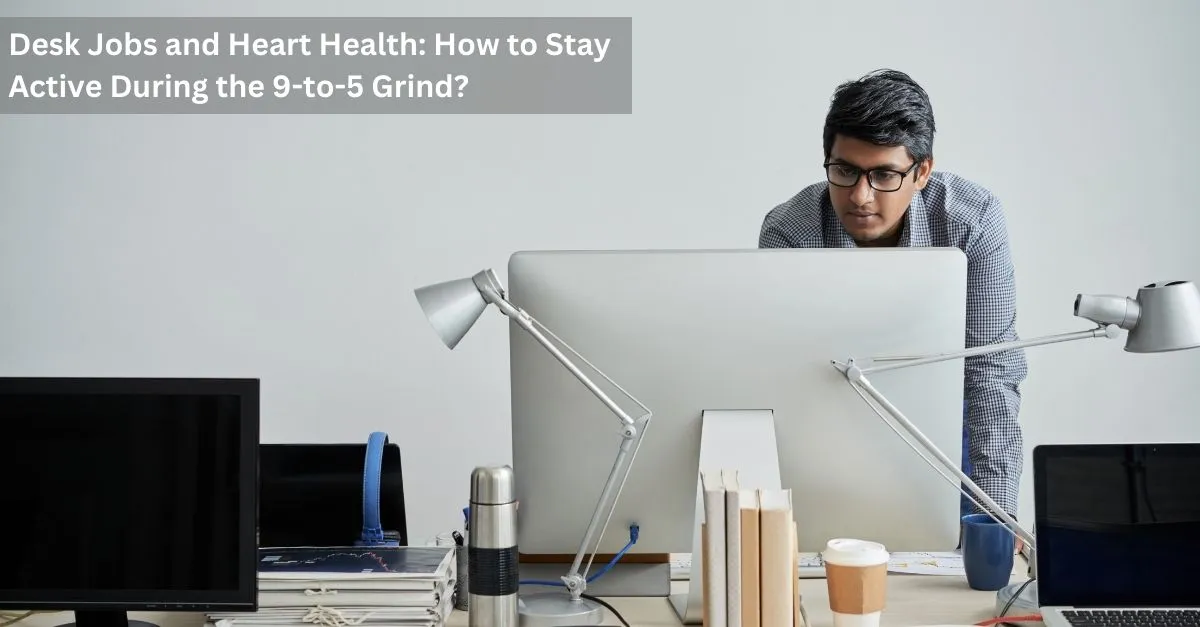In our modern, technology-driven world, many of us find ourselves spending the majority of our working hours sitting at a desk. While this sedentary lifestyle may be a necessity for our careers, it can have a detrimental impact on our heart health. Research has shown that prolonged sitting is associated with an increased risk of heart disease, obesity, and a range of other health issues. However, there are ways to combat the negative effects of a desk job and stay active during the 9-to-5 grind.
What are the health problems caused by prolonged sitting?
Before we delve into solutions, it's crucial to understand the problem at hand. Prolonged sitting is linked to various health issues, and it's particularly concerning for heart health. When you sit for extended periods, your muscles become inactive, which can lead to reduced circulation and lower levels of physical activity. This, in turn, contributes to increased cholesterol levels, high blood pressure, and a higher risk of obesity – all of which are risk factors for heart disease.
Additionally, sitting for long hours can lead to poor posture, which may cause musculoskeletal problems, leading to discomfort and even chronic pain. To counter these adverse effects, we need to find ways to incorporate physical activity into our workday.

To know more about Heart Attacks and lifestyle changes that can help in preventing Heart attacks, consult with a Cardiologist.
Tips to reduce sitting time
1. Embrace Standing Desks
One way to break free from the shackles of a sedentary desk job is by embracing standing desks. These desks allow you to work while on your feet, reducing the amount of time you spend sitting. Standing desks come in various styles, from fixed-height options to adjustable models that enable you to switch between sitting and standing.
By using a standing desk, you can alleviate some of the negative health effects of sitting and even improve your posture. It might take a little time to adjust, so start by standing for short periods and gradually increase the duration over time.
2. Frequent Microbreaks
Even if you're unable to invest in a standing desk, you can still make a significant difference in your heart health by taking frequent microbreaks. Set a timer to remind yourself to stand up and move around for a few minutes every hour. These breaks can help combat the negative effects of prolonged sitting by increasing blood circulation and preventing muscle stiffness.
During these breaks, you can stretch, walk around your office, or perform simple exercises like squats, lunges, or calf raises. These small efforts can make a big impact on your heart health over the course of the workday.
3. Incorporate Physical Activity into Meetings
Meetings are an integral part of office life, but they often mean more sitting. To add a touch of physical activity to your meetings, consider holding walking meetings. Instead of gathering in a conference room, take your discussions outside and walk while you talk. This not only encourages a more active lifestyle but can also stimulate creativity and improve concentration.
If walking meetings aren't feasible, you can incorporate light stretches or simple exercises into your seated meetings. These small adjustments can go a long way in maintaining heart health in a sedentary work environment.
4. Desk Exercises
Desk exercises are an excellent way to stay active without leaving your workspace. These exercises can help you strengthen muscles and improve circulation while keeping your work on track. Here are a few desk exercises you can incorporate into your daily routine:
Desk Push-Ups: Place your hands on your desk, shoulder-width apart, and walk your feet back until your body forms a straight line. Lower your chest to the desk and push back up. This exercise is a great way to work your upper body.
Desk Planks: Rest your forearms on your desk and step your feet back until your body is in a plank position. Hold this position for as long as you can. Desk planks are fantastic for core strength.
Desk Leg Raises: Sit at your desk with your knees bent at a 90-degree angle. Lift one leg at a time, straightening it until it's parallel to the floor. This exercise targets your leg muscles and helps with circulation.
Desk Chair Squats: Stand up from your chair and lower yourself back down, as if you're about to sit but stop just before your seat touches the chair. Push back up to the standing position. This exercise works your leg muscles and is a good way to break up long periods of sitting.
5. Active Commuting
If you live relatively close to your workplace, consider active commuting options like walking, cycling, or even jogging. These activities can add a dose of physical activity to your daily routine and are excellent for your heart health. Active commuting can help you avoid the stress of traffic and public transportation while keeping you fit and energized.
If your workplace is too far for walking or cycling, you can explore options like parking farther away from the office or using public transportation in combination with walking. These small changes can make a significant impact on your daily physical activity levels.
6. Healthy Snacking and Hydration
While staying active is essential for heart health, so is maintaining a healthy diet. Make wise snack choices during your workday, opting for fruits, nuts, and other heart-healthy snacks. Staying hydrated is equally important; drink plenty of water to ensure your body functions optimally and helps in regulating your heart health.
7. Work-Life Balance and Stress Management
The demands of a desk job can sometimes lead to increased stress levels. Chronic stress can have a detrimental impact on your heart health, so it's crucial to maintain a healthy work-life balance. Taking regular breaks, managing stress through relaxation techniques, and finding time for hobbies or exercise outside of work can help reduce stress and contribute to a healthier heart.
Prioritizing Heart Health in a Desk Job
In conclusion, it's clear that a sedentary desk job can pose significant risks to your heart health. However, with a few strategic changes and mindful adjustments to your daily routine, you can stay active and mitigate the negative effects of prolonged sitting. From using standing desks to incorporating regular microbreaks, adopting desk exercises, and making smart dietary choices, there are numerous ways to prioritize your heart health while working a 9-to-5 job.
To know more about Heart Attacks and lifestyle changes that can help in preventing Heart attacks, consult with a Cardiologist.
Remember, it's essential to stay proactive in safeguarding your well-being, even in a desk job setting. By doing so, you can lead a healthier and more active work life, ultimately reducing your risk of heart disease and improving your overall quality of life.
Related Blog Articles:
1. The Silent Threat: How Chronic Stress Impacts Your Cardiovascular System
2. Unmasking the Rising Tide of Heart Attacks Among Young Adults
.webp)














